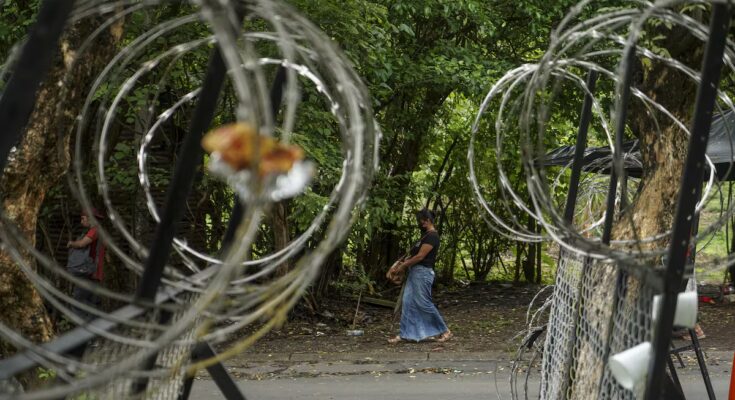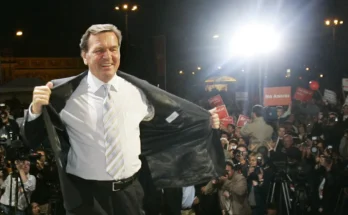The security crisis affecting Costa Rica and Chile, two of the most consolidated Latin American democracies with upcoming presidential elections, makes fear a primary vector when deciding to vote. This is the case with respect to the increase in crimes that incorporate violence in their execution and it is also the case with respect to emigration where a certain vision of “the other” is unbearable. Outside the belligerent framework in which war served as a major trigger for panic, different forms of fear prevail everywhere.
Fear functions both as a diagnosis of the human condition – marked by distrust and competition – and as a justification of political authority. It is a feeling that resides in the gut and a strategy generated by others to achieve certain goals. Fear occupies a prominent place in the work of Thomas Hobbes, which in the first half of the 17th century refers to the fundamental fear that every individual feels for their own survival. That personal fear, especially of violent death, drives us to act rationally, seek safety, and accept the authority of a ruler. It is the origin of the social pact and of obedience to common power.
In his work, above all Leviathanfear is a central driver of human action and the foundation of political order. The fear of violent death and the chaos of the “state of nature” push individuals to give up part of their freedom and accept a social contract. This agreement creates a strong sovereign power capable of guaranteeing security and avoiding the war of all against all so that only a feared common power can maintain peace and obedience.
However, the case mix is very different. It is found in Mao’s maxim that “political power comes from the barrel of a gun,” which today provides a strong incentive to exert constant pressure on the Chinese military establishment. The purges taking place in the country’s People’s Liberation Army to strengthen Xi Jinping’s control over the promotion regime in the ranks to ensure the future loyalty of the next generals presupposes the validation of fear as a strategy of loyalty.
But it also appears in Steve Bannon’s ideology, which forms the core of the MAGA movement’s strategy: saturate reality with shit (Flood the area with shit). An action that represents a maneuver to transform chaos into method, the result of President Trump’s daily actions, in which unpredictability and impulses are always present together with concrete actions.
This is what happened with the expiration of Temporary Protected Status in early November, which covered hundreds of thousands of Venezuelans in the United States and which generated a wave of fear-driven business closures and home sales that culminated in their departure from the country. This also happens with the panic with which the deployment of a monumental military force is expected to be deployed in the Caribbean, as has not happened since 1989, when the North American invasion of Panama took place.
It is the terror unleashed in forms of action carried out by groups or gangs outside the desirable legitimate monopoly of violence that produce acts such as that which occurred the second weekend of November when 27 prisoners of the Machala prison in Ecuador died by hanging after a prison riot or the daily events in various places in Mexico where murders fundamentally linked to drug trafficking occur with impunity. There is also fear in the favelas of Rio de Janeiro after the October 29 massacre perpetrated by the police. The panic of half of the more than 85,000 detained without due process by the Bukele regime, unaware of the criminal behavior of the brutal Salvadoran gangs.
But it is not only the upheaval that the use of force brings to the ordinary lives of ordinary people, it is also the psychological aspect that creates havoc. From the subtle fear of missing out (FOMO) to that deriving from the emergence of Artificial Intelligence (AI) in daily life, whose dizzying growth in use and in the most diverse applications could not ignore its ability to use in the universe of various practices of dubious legality and which reach the scope of organized crime.
The result of this exponential immersion, due to its own component of adaptability to numerous aspects towards which people show ignorance and misunderstanding of their own mechanisms and the scope of their own actions, causes classic fear in the form of psychosis that generates the unknown. Likewise, it increases the very real possibilities of extortion, theft, mass identity kidnapping and sabotage, without relegating what the world of disinformation entails.
This new class of AI-powered crimes and malicious actions is putting lives, businesses and financial systems at risk, while strengthening trust. Police training, laws and cross-border tools are not enough, which means mistrust spreads everywhere. Furthermore, crimes can now target millions of people at a time through voice cloning and identity theft, as widespread suspicious deception undermines diverse forms of institutionality because no one believes or trusts anything. A subtle way in which fear seems to be mitigated or even hidden.



